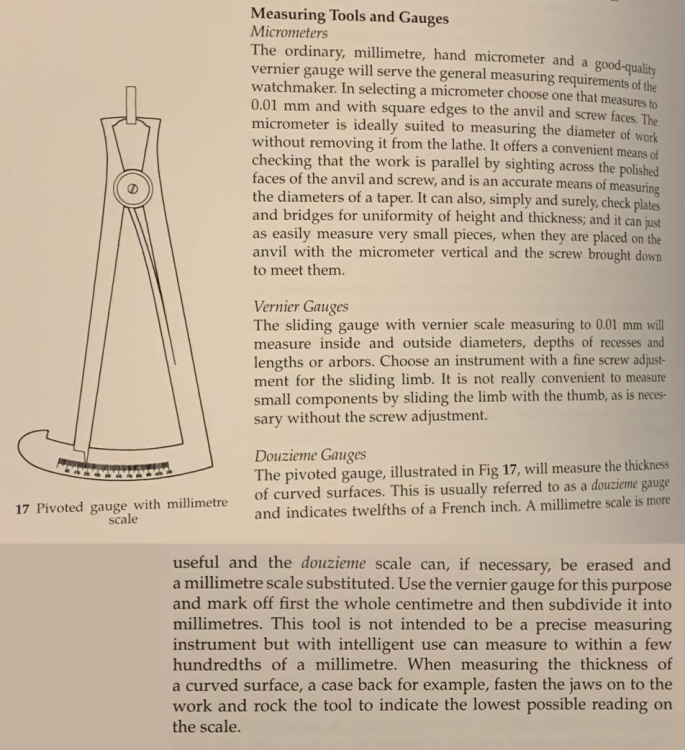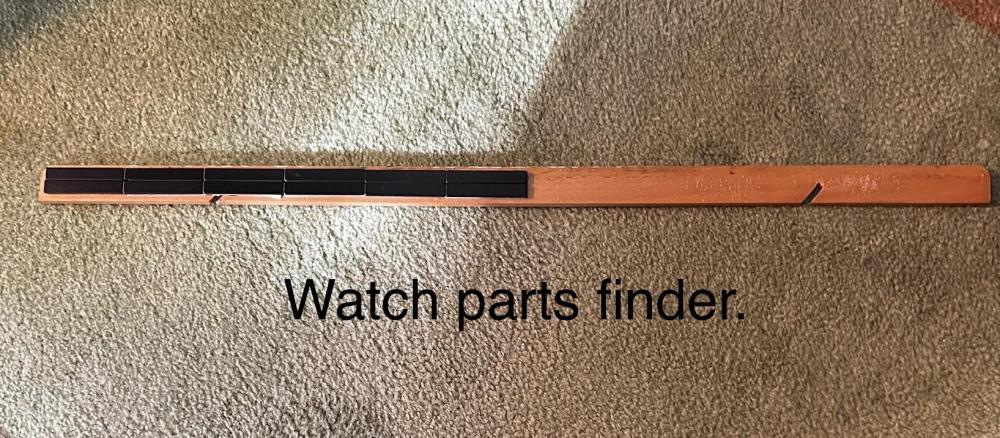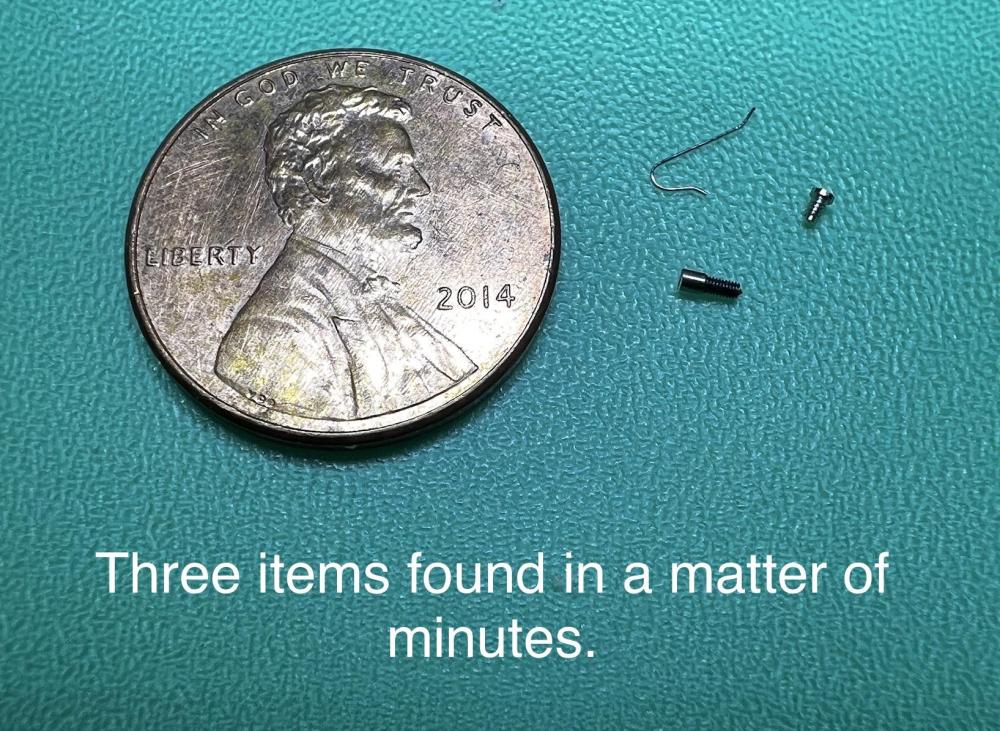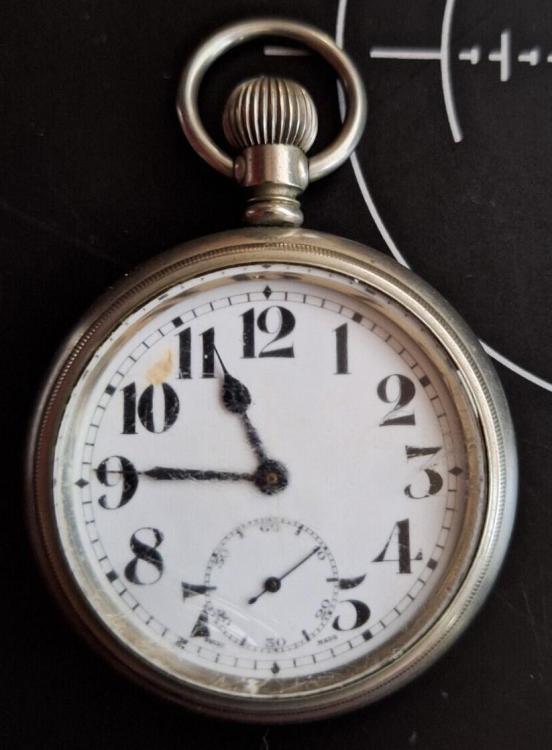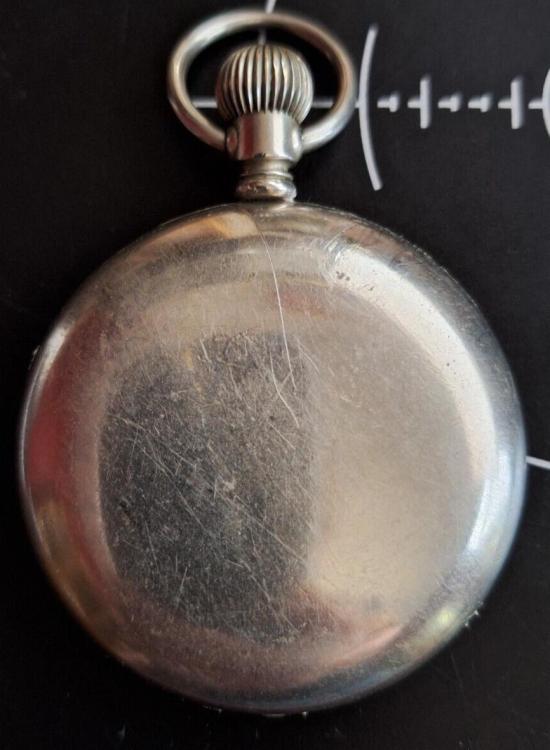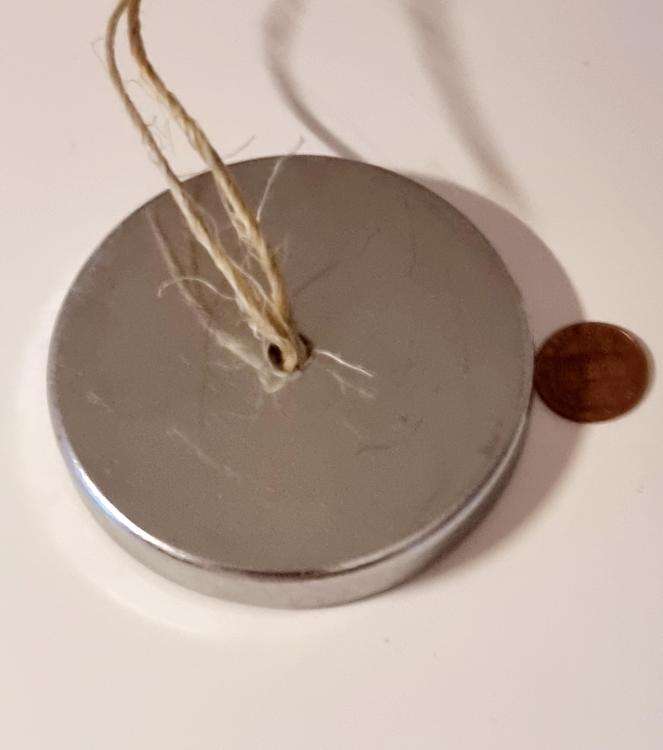Leaderboard
Popular Content
Showing content with the highest reputation on 07/30/23 in all areas
-
Well said Tom, young sir. When you reach the level of changing staffs and jewels you are doing ok, many youtubers are not even there and are making money from that system. Stating the obvious no matter where you are with it, you are only one step away from the next step. Before you know it a few months of practise can have you making leaps and bounds. Then you realise how much you underestimate what you are truly capable of. This applies to many things in life when you put your mind to it, this you know J x2 points
-
Nothing like that was around in my days. Even if you invest in one you will still have to machine the parts after they have been filled or are you going to file the repair if so you are going to have to be extremely good other wise you could end up where you started.2 points
-
My goodness, you do have a large one! The bigger, the better, that's my opinion. That's a robust handle as well, mine just has a hole (refer back to my pic).2 points
-
2 points
-
If tools and parts you can just horde them like me and NEW (Rich) joking aside anything you are never going to get into or use I would make them available to the hobbyist community at reasonable cost as best I could. I have some stuff I have stripped, cleaned and lubricated as well as more to do that are surplus to my needs and this is my intention. If I get a bit of cash to go towards stuff I do want and likely to use then that would be great. Tom @Galilea don’t necessarily write off quartz, it is a marvel of engineering mixed with electronics. Sure there are the 50 cent movements in $5 watches but there are also really nice movements out there with jewels in them that are also serviceable, never mind the high accuracy quartz (HAQ) movements. Alongside that citizen have the most accurate watch currently, a couple of seconds out per year, a triumph of horological achievement. Tom1 point
-
Thank you Tom. I think I am headed for 2 - 5, as I have a quartz allergy. Although, some of those old Timex electrics and I have a wonderful Wittnauer electric , I could see changing those batteries. It's true, it is a trade we can all use in our own way. I don't plan on fixing any but my own, and that will be a challenge. It is wonderful to think of all of my watches being clean and repaired. (Scans quoted post ferociously, looking for an opportunity to goof off with the esteemed @Neverenoughwatches finds none ) Thank you, very motivational. Leaps and bounds sounds wonderful.1 point
-
Thank you for thinking of me, @watchweasol. Bless you. I wouldn't dare claim any proficiency in micro TIG welding. I have not tried my hand at laser welding. I chanced upon some YouTube videos on what a Sunstone micro TIG welder could do. Then by chance, I met the local Sunstone distributor at a dental convention and they had a showroom set, which they were also using for product demonstrations and training, clearing at almost half price. But it was still pretty expensive. ($7000 SGD). Instead, I bought a China made micro TIG welder from AliExpress for $600. I was a little disappointed with the results that I was getting. The power control at low amperage and short pulse times was erratic. Sometimes the pulse was underpowered, other times it would blow out and could vaporize small objects or create a molten puddle of metal. I assumed it was a junk Chinese product. But a few months before I retired and closed my clinic, I discovered that the problem was actually due to my primary Argon gas regulator. The oring in the regulator had hardened and cracked. So, when my foot was off the pedal, the Argon gas pressure would build up higher than the set pressure and when I stepped on the pedal again, it resulted in a puff of Argon and a giant current pulse. After I fixed the regulator, I didn't get to practice much with the welder. It is now sitting under a tarpaulin in my driveway. I just haven't found the energy to unpack all the stuff I brought back from the clinic. I think a laser welder would be capable of much better control. But here it Singapore, for any laser with more power than a laser pointer would require a "non ionising radiation device" licence. And the Government agency tasked to oversee the licensing is as clueless as everyone else. The regulations are worded in such an ambiguous manner that it frightens me. But recently I spoke with my mentor who told me that the Chinese manufacturer that make the new generation dial feet soldering machines, has come up with a new machine that is capable of doing watch case repairs, bracelet repairs and even broken pivot repairs. Is it too good to be true? We'll just have to wait and see.1 point
-
This is a many splendoured vocation, we can be:- just change batteries also change or size straps and bracelets polish cases and bracelets replace movements service movements strive to use the techniques that we learn along they way of our interactions here and elsewhere to attempt to restore a watch to the best version of itself we can. you can specialise in any or all of the above, (I am not a professional nor am I proficient in much of this except for some skills in the first four. I conjecture that most of us here fit in the first 5 listed above. I do however from my time on here believe there are quite a few of the members in category 6. we should strive to help everyone here to achieve what they want/need to do no matter the level they decide to work at. Tom1 point
-
Please forgive if this has been posted... I made this "watch parts finder" by using double sided sticky tape to attach some neodymium magnets to a piece of wood. Within minutes i had found a click spring that my wife and i had spent an hour searching for. I also found 2 screws, one recently lost and one lost a month ago. These parts were on the carpet (i know, not ideal for watchmaking). I had literally been on my hands and knees with a flashlight searching every inch of the area, and never found these until i used my new invention. As the Army taught me many years ago... "the proper tool for the proper job."1 point
-
Indeed it does help, Tom, because now I know what it is. Thank you, and @everyonesdesign as well. Now to get up to learning about how to use it, in Mark's classes. I am still on Part 1, but am very enthusiastic.1 point
-
1 point
-
This is reminding me a lot of another discussion that occurred today here's a link to it https://www.watchrepairtalk.com/topic/27057-what-you-on-with-today As you can see the title of the talk appropriately does not fit the subject at all which is probably why you missed it today. As I don't always know if pin levers function identical in all situations so conceivably can have a watch that just may not show up On the timing machine. So basically depending upon a variety of factors of unknown things may be a watch just can't be timed on the timing machine. Then I assume the regulator pins of the proper spacing as if they're too far apart that would be a reason for running slow. Then this morning's discussion was it was at the maximum regulation do you have room to regulate it? So if you have room to regulate to move the regulator you can do it the old-fashioned way. Although I modify that I like to use a digital timepiece as a reference. The reason I use digital is there's no hands so I don't have to contend with it may be a problem of where my digital timepiece hands are. If you ever looked at some quartz watches you'll notice that sometimes I'll be right on the second on one side of dial around them aside to be somewhere else. So with a digital timepiece that preferably has seconds I also find a small camera to photograph the watch and the digital timepiece that gives you time to study your picture and you don't have to pressure to try to look both at the same time. Then wait to see what's going on how slow are you and then you just gently start bumping the regulator and see what happens then yes this is how they used to do it they would typically sceptered timepiece to a master clock. If they were doing chronometer watch trials you would typically have two people someday be looking at the master clock someday be looking at the watch and if you're really intense you can actually see is the second hand on a watch job every time the escapement impulses basically you get down to a fraction of a second for a chronometer. In your case I would just worry about getting it within a minute of the day and not worry about it so old-fashioned way visually comparing to another timepiece that preferably keeps better time then whatever your timing1 point
-
1 point
-
Can weget back to the original topic , that includes me. If one wishes to start a new thread on music please do so in Chat about Anything.1 point
-
Don’t forget Sha Na Na! Those Woostock lists always forget to mention Sha Na Na…for some reason.1 point
-
Assuming it's a standard analogue micrometer then yes as and when required but its not really calibrating, just setting the zero position as once zero is set it should be accurate all through the range, as long as its not worn out or damaged. Just make sure both measuring faces are clean then close them together, you should be able to feel when they close and are clean, then check its showing zero, if not use the supplied adjusting spanner, looks like a small C spanner supplied with all micrometers when new, the move the barrel until its shows zero is aligned, repeat and check its now aligned, if not repeat until it is. It's easier to do than write instruction for. Fortunately1 point
-
One of the tests or a test to tell if your index wheel has a problem is to do the following. So what you want to do is pluck the tuning fork so the index wheel was spinning and you watch where it stops. As you can't actually see where the wheel stops you look at how the arms are arranged. Then you do it again and each time you do it as long as a stops in a random position your okay but if it seems to favor a particular location or an exact location you have a bad index wheel.1 point
-
The extra hundredth thing is a thing with pretty much every jeweling tool I've used, including Seitz, Favorite, Chatons SA, and Horia. I tend to use the lever types, but Horia screw types are similar. Think of the stack up of parts- the stump, the watch plate, the jewel, the pusher, the interface of pusher to spindle, then finally the micrometric screw. A micron or two of slop or mushiness here, another there, that it's typically only a hundredth is pretty fantastic. As for orienting the jewel, if it's truly symmetric put it however you want. If there is an oil sink (however slight), that goes opposite the wheel.1 point
-
Hello all. Away for the next 12 nights, poor or non existant WiFi. So if I'm not active, I'm not dead. Hehe.0 points





